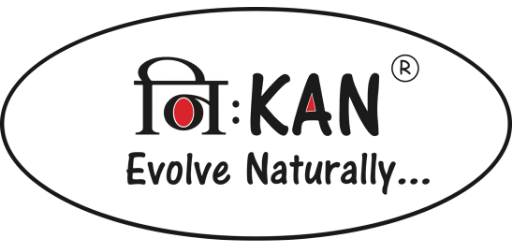During these initial years, your monthly payment will be approximately $2,045. The offers that appear on this site are from companies that compensate us. But this compensation does not influence the information we publish, or the reviews that you see on this site. We do not include the universe of companies or financial offers that may be available to you. A 5/1 ARM rate gives you an initial rate that’s fixed for five years, and then adjusts every year for the rest of the loan’s term. If you found this guide helpful you may want to consider reading our comprehensive guide to adjustable-rate mortgages.
Treasury & payments
A fixed-rate mortgage is typically the best option for borrowers who plan to stay in their homes for the long haul and don’t want any fluctuations in their monthly payments. Bankrate.com is an independent, advertising-supported publisher and comparison service. We are compensated in exchange for placement of sponsored products and services, or by you clicking on certain links posted on our site.
Mortgage Rates by City
We’ll show you how to evaluate whether an ARM makes sense for you, as well as how to choose one that won’t put you in financial distress down the road. Refinancing might offer a way to secure a more stable financial footing. At Bankrate, we take the accuracy of our content seriously. Bankrate has partnerships with issuers including, but not limited to, American Express, Bank of America, Capital One, Chase, Citi and Discover.
What is a 5-year ARM refinance loan?
- If the yield on that index increases, your ARM rate also increases.
- It’s a flexible choice that adapts to changing financial landscapes while providing a safeguard against rate unpredictability.
- Though you pay that initial indexed rate for the first five years of the life of the loan, the actual indexed rate of the loan can vary.
- Right now, a 5/5 ARM can offer a lower interest rate than a comparable fixed-rate mortgage.
For this example, we’ll deal with a hypothetical $400,000 loan amount and assume the loan comes with a 2% cap for every rate adjustment and a 5% lifetime cap. The images below compare their payments and rates over time. Generally, an adjustable-rate mortgage gives you a lower rate than a 30-year fixed-rate loan. As of July 2022, the average 5-year ARM rate was 1.01% lower than the 30-year fixed, potentially saving a homebuyer $180 per month on a $300,000 loan, or about $11,000 in the first five years. These loans could be a great idea for someone who expects their income to increase in the future, or someone who plans to sell, refinance, or pay off the loan within five years. To visualize potential payment changes throughout the loan’s term, consider using tools like an adjustable-rate mortgage calculator.
Online & mobile banking
However, right now ARMs aren’t reliably outcompeting 30-year fixed-rate mortgages. Though 5-year loans are all lumped together under the term “five year loan” or “5/1 ARM” there are, in truth, more than one type of loan under this heading. Understanding which of these types are available could save your wallet some grief in the future. Some types of 5-year mortgages have the potential for negative amortization. Right now, a 5/5 ARM can offer a lower interest rate than a comparable fixed-rate mortgage. However, you can’t assume that ARMs will always outcompete 30-year fixed-rate mortgages — in recent years, these products have gone back and forth, neither reliably outcompeting the other.
Get answers to common questions.
The action you just performed triggered the security solution. There are several actions that could trigger this block including submitting a certain word or phrase, a SQL command or malformed data. You’ll make less when you sell your home if you choose an interest-only option. Your payment is likely to decrease if an economic recession hits.
Fairway Mortgage: Pros and cons
One year later, your loan will adjust again, and the process will repeat to the end of the loan term. If your rate goes up, your monthly payment will also go up. The following table shows the rates for Los Angeles ARM loans which reset after the fifth year. what is a 5 year arm mortgage If no results are shown or you would like to compare the rates against other introductory periods you can use the products menu to select rates on loans that reset after 1, 3, 7 or 10 years. Clicking on the purchase button displays current purchase rates.
New York Homeowners May Want to Refinance While Rates Are Low
Alternatively, you can use the funds for other financial goals, like saving for college or retirement. ARM requirements are similar to the minimum mortgage requirements for fixed-rate loans, but with a few significant differences. Below is a side-by-side look at the features of a fixed-rate mortgage versus a 5/1 ARM. By focusing on these factors, you can position yourself to receive the best possible rate on your 5/1 ARM, aligning your mortgage with your financial goals. Understand the Role of Mortgage PointsWhile purchasing mortgage points might appear to lower your interest rate, the initial costs may not always be justified, especially with a 5/1 ARM.
What Is a 5/1 ARM?
You may hear the term “fully indexed,” which simply refers to how much your rate will be when your margin and index are added together. To find out what your fully indexed rate would be, you simply add the current index rate to your margin (you can find your margin in your loan paperwork). For example, if the index rate is currently 2%, and your margin is 5%, then your fully indexed rate would be 7%. The “5” in a 5/1 ARM is the number of years your rate is temporarily fixed.
Adjustable-Rate Mortgage & Rates
When considering a 5/1 ARM, it’s essential to weigh the initial savings against the possible future adjustments. Understanding these dynamics can help you choose the mortgage that best aligns with your financial goals and risk tolerance. The rates shown above are the current rates for the purchase of a single-family primary residence based on a 45-day lock period. Your final rate will depend on various factors including loan product, loan size, credit profile, property value, geographic location, occupancy and other factors.
Are there specific eligibility requirements for 5/1 ARM loans?
The 5-year ARM offers these lower rates and the predictability of a fixed-rate mortgage for the first five years. When shopping for a 5-year mortgage rate, the initial rate should be of less concern than other factors. The margin amount, the caps, the maximum lender fees and the potential for negative amortization and payment shock should all weigh more in your decision than the initial rate.
Though you pay that initial indexed rate for the first five years of the life of the loan, the actual indexed rate of the loan can vary. It’s important to know how the loan is structured, and how it’s amortized during the initial 5-year period & beyond. With a hybrid loan the principle is being amortized over the entire life of the loan, including the initial three year period. This is generally the safer type of 3-year ARM for most people, since there is no potential for negative amortization. Generally the rates on these loans are slightly higher than other 3-year loans, since there is less potential profit to the lender.
Today’s 5-year ARM rates
Keep in mind, though, that it’s difficult to predict market or life changes. A 5/5 ARM is an adjustable-rate mortgage with an initial fixed rate for the first five years of a 30-year loan term. After five years, the mortgage rate is variable and can change every five years for the remaining loan term. This indicates that the mortgage has a fixed rate for the first five years and then an adjustable rate every (1) year afterward.
Doing so makes the most sense when you can get a lower ARM rate. An ARM payment increase could stretch your budget thin, especially if your income has dropped or you’ve taken on other debt. Knowing what type of mortgage you’re getting can be a challenge, since so many things that sound like a good idea are often the things that can cost you the most money. Start your application if you’re ready to refinance your mortgage. See if refinancing is right for you and how much you could save with our mortgage refinance calculator. By evaluating your specific situation against these circumstances, you can determine whether a 5/1 ARM aligns with your financial goals and lifestyle.
A 5/1 adjustable-rate mortgage (ARM) is a type of home loan worth considering if you’re looking for a low monthly payment and don’t plan to stay in your home long. For the first five years, 5/1 ARM rates can be lower than 30-year fixed-rate mortgages. After that, the interest rate and payments can increase significantly. Understanding how and when the rate on a 5/1 ARM adjusts can help you decide whether the temporarily lower payment is worth it.
- Below is a side-by-side look at the features of a fixed-rate mortgage versus a 5/1 ARM.
- One point equals one percent of the loan amount (for example, 2 points on a $100,000 mortgage would equal $2,000).
- Generally the rates on these loans are slightly higher than other 3-year loans, since there is less potential profit to the lender.
- Your monthly payment may fluctuate as the result of any interest rate changes, and a lender may charge a lower interest rate for an initial portion of the loan term.
- This indicates that the mortgage has a fixed rate for the first five years and then an adjustable rate every (1) year afterward.
- When considering a 5/1 ARM loan, it’s crucial to understand the specific eligibility requirements, as they vary depending on the type of loan and lender criteria.
- That’s when ARM rates were pushed up, exceeding 30-year fixed-rate loans in many cases.
- Though 5-year loans are all lumped together under the term “five year loan” or “5/1 ARM” there are, in truth, more than one type of loan under this heading.
- You can find this rate information in the “Adjustable Interest Rate Table” on Page 2 of your loan estimate.
- While we strive to provide a wide range of offers, Bankrate does not include information about every financial or credit product or service.
Some five year loans have a higher initial adjustment cap, allowing the lender to raise the rate more for the first adjustment than at subsequent adjustments. It’s important to know whether the loans you are considering have a higher initial adjustment cap. One of the unique features of the 5/5 ARM is the longer adjustment period after the first five-year period ends. Many lenders offer 5/1 ARMs, which adjust every year after the fixed-rate period ends. A 5/5 ARM gives you five years in between adjustments, which offers a little more breathing room in your budget for those in-between periods when your monthly payments aren’t changing. After the five-year period, the interest rate may adjust annually based on market conditions, potentially increasing or decreasing your monthly payments.
A 5-year ARM (adjustable rate mortgage) comes with a low introductory fixed interest rate for the first 5 years of the loan, saving you money compared to a 30-year fixed mortgage. After the initial period, the rate can change (adjust) once each six or 12 months for the remaining life of the loan. A 5-year ARM has an initial fixed rate for five years and an adjustable rate for the remaining life of the loan.
After that fixed-rate time expires, your rate adjusts to the market rate, either higher or lower. The most common types of ARMs include 3/1, 5/1, 7/1 and 10/1 loans. Adjustable-rate mortgages (ARMs) can come with starting rates that are lower than comparable 30-year fixed mortgage rates. When mortgage rates rise, borrowers are often drawn to the temporary payment savings offered by initial ARM rates.
You can find out the specific index your lender uses on your loan estimate paperwork. If the yield on that index increases, your ARM rate also increases. Another common mortgage is the 5/6 ARM, which adjusts every six months after the initial five-year period. ARM lenders may require a higher credit score, larger down payment or restrict the amount of equity you can tap. You can use the savings to pay off your mortgage faster and build home equity.
That translated to borrowers saving about $157 on their monthly mortgage payments if they went with an ARM instead of a fixed-rate loan. However, when the Federal Reserve started increasing rates in 2022, this affected ARM rates more directly than it did 30-year fixed-rate loans. That’s when ARM rates were pushed up, exceeding 30-year fixed-rate loans in many cases.
Understanding these prerequisites can help you determine your eligibility and prepare more effectively for the loan application process. Adjusting your financial health to meet these guidelines can increase your chances of securing a favorable loan. The clock starts ticking on your 5/1 ARM as soon as you close the loan. If you were to close the mortgage in July 2024, for example, your rate wouldn’t change again until July 2029. Yes, you can refinance an ARM just as you can any other mortgage loan.
- The risk of an ARM is that your monthly payments could rapidly increase if mortgage interest rates shoot up.
- The ARM’s rate can then rise, fall or stay the same, depending on the movements of the broader market.
- In the worst-case scenario, if rates climb to the maximum allowed, your monthly payment could rise to about $3,140.
- Bankrate.com is an independent, advertising-supported publisher and comparison service.
- Adjust the graph below to see 5-year ARM rate trends tailored to your loan program, credit score, down payment and location.
- A 5-year ARM refinance loan is a variable-rate loan with an initial fixed-rate feature.
- When mortgage rates rise, borrowers are often drawn to the temporary payment savings offered by initial ARM rates.
- After five years, the mortgage rate is variable and can change every five years for the remaining loan term.
Compare week-over-week changes to current adjustable-rate mortgages and annual percentage rates (APR). The APR includes both the interest rate and lender fees for a more realistic value comparison. Here’s a comparison of ARM loan payments against the two most popular types of fixed-rate mortgages, with all other things being equal, assuming an adjustment to the maximum payment cap. This type of mortgage is also called a pick a payment mortgage.
Only when you’ve determined you can live with all these factors should you be comparing initial rates. The risk of an ARM is that your monthly payments could rapidly increase if mortgage interest rates shoot up. However, your lender must disclose the index and cap structure they’ll use to calculate your ARM rates, which lets you know the maximum amount you could pay. That’s why the possibility that your ARM will adjust up to a wildly high interest rate doesn’t have to scare you — as long as you know that the ARM fits your life and financial situation.
Points are more beneficial if you plan to hold the mortgage long enough to offset the upfront cost, such as with a 10-year ARM or a fixed-rate mortgage. Make a Larger Down PaymentA higher down payment reduces your loan-to-value ratio (LTV), which can lead to lower interest rates. Aim to contribute more upfront if possible, as this demonstrates financial stability and commitment. Programs, rates, terms and conditions are subject to change without notice. Adjust the graph below to see 5-year ARM rate trends tailored to your loan program, credit score, down payment and location.
It’s common for homeowners to choose an ARM if they’re planning to sell or refinance their home before the ARM begins to adjust. Negative amortization, to put it simply, is when you end up owing more money than you initially borrowed, because your payments haven’t been paying off any principle. When the loan reaches this level the mortgage automatically converts into a fully amortizing mortgage which requires principal repayment. Both 5/5 ARMs and 5/1 ARMs come with rate adjustment caps that limit how high your rates and payments can go.


